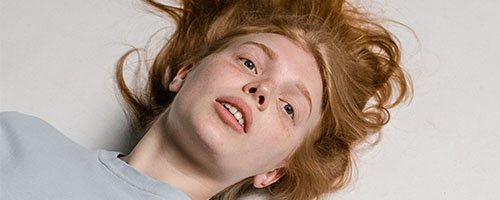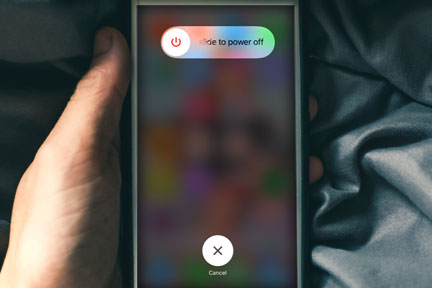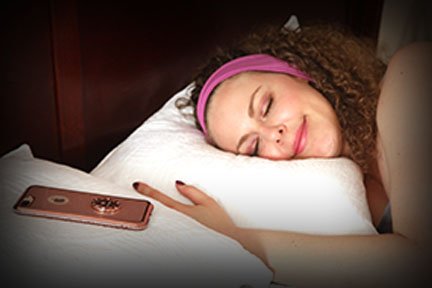How to Prevent Sleep Paralysis

Perhaps you, or a person you know, has felt it before—the chilling realization that you're awake but can't move or speak. With this feeling often comes a dark pressure, one that seems to steal your breath and fill your mind with silence and noise all at once. It's a condition that can be terrifying, disturbing, and tormenting. It's called sleep paralysis.
Unfortunately, there is no one-size-fits-all treatment for this condition. The good news, however, is that there are preventative steps you can take to improve your quality of sleep and reduce the likelihood of sleep paralysis. Further, this strange sleep state is rarely linked to any serious health conditions.
In this blog post, AcousticSheep™, creators of SleepPhones® sleep headband headphones, defines sleep paralysis, discusses isolated and recurrent events, and lists actions you can take to prevent sleep paralysis.
What is Sleep Paralysis?
Sleep paralysis is a condition wherein people experience a brief loss of muscle control (atonia) and are unable to move. It occurs while passing between stages of wakefulness and sleep. People may also experience pressure on their chests, a sense of choking, and hallucinations.
Sleep paralysis is a type of "parasomnia," a general term for disorders involving abnormal movements and behaviors during sleep. Physicians consider it a REM (rapid eye movement) parasomnia, as it seems to merge wakefulness and REM sleep states.
While sleep paralysis is not dangerous and typically does not cause physical injury, it can be frightening for those who experience it.
Types of Sleep Paralysis
Anyone can experience sleep paralysis, whether healthy or diagnosed with a pre-existing condition that makes them more susceptible to the experience. If sleep paralysis occurs while falling asleep, medical professionals refer to it as hypnagogic or predormital sleep paralysis. Conversely, sleep paralysis that occurs upon waking is called hypnopompic or postdormital sleep paralysis.
There are two main categories of sleep paralysis:
- Isolated sleep paralysis: unrelated to a medical diagnosis such as narcolepsy
- Recurrent sleep paralysis: multiple episodes over a prolonged period of time
According to a study published in the National Center for Biotechnology Information, approximately "7.6% of the general population, 28.3% of students, and 31.9% of psychiatric patients experienced at least one episode of sleep paralysis." Most people undergo an episode of sleep paralysis at least once in their entire lifetime, typically during adolescence. The most common causes of sleep paralysis are, but are not limited to:
- Insomnia: difficulties falling asleep and staying asleep
- Disrupted sleeping patterns
- Narcolepsy: a chronic neurological disorder that affects the brain's ability to control sleep-wake cycles
- Post-Traumatic Stress Disorder (PTSD): a psychiatric disorder that, among other symptoms, can cause disturbing thoughts and sleeplessness
- General Anxiety Disorder (GAD): persistent and excessive worry about a number of different things
- Panic Disorder: a type of anxiety disorder that causes panic attacks
- A family history of sleep paralysis
How to Prevent Sleep Paralysis and Treatment Options

If you have recurring sleep paralysis, take comfort in knowing that it is not life-threatening or untreatable. A sleep specialist or physician may help discover sleep disorders or underlying conditions that could be triggering sleep paralysis and offer alternative treatments.
First, it is essential to get enough sleep each night to help prevent sleep paralysis and the negative health consequences of sleep deprivation, such as an increased risk of heart disease and obesity. Further, aim to make your sleep space cozy, clean, and cool. If possible, avoid sleeping on the couch or an uncomfortable mattress. Keeping your bedroom environment dark and quiet will have a hand in preventing sleep paralysis from occurring; this means turning off your electronics or tucking them away to avoid light and distractions.
If you find that sleep paralysis frequently disrupts your sleep, consider trying sleep aids to help you achieve a quality night of rest, such as SleepPhones® headphones. Our headphones, which use Bluetooth® wireless technology, were designed by a licensed family physician with your comfort in mind.
SleepPhones® headphones are comfortable, flat headphones in a headbandnoise-canceling headphones that can help minimize stress by reducing ambient noise, conversations, traffic sounds, and even snoring; they can even be used as a sleep mask! You may also listen to relaxing meditation sounds, radio, audiobooks, or your favorite tunes to fall asleep more quickly.
Other sleep paralysis prevention methods include establishing and maintaining healthy sleep patterns by limiting sleep deprivation, sleep schedule irregularities, and sleep timing disruptions. It is crucial to sleep in an environment that feels safe from potential interruptions or disturbances, such as weather conditions, pets, or household noises. Sharing a sleeping space with someone who will wake you if sleep paralysis occurs may also be beneficial.
There are several more steps you as an individual can take to prevent sleep paralysis, such as:- Getting 7-9 hours of sleep each day to avoid sleep deprivation
- Avoiding naps
- Establishing a strict bedtime routine and sticking to a sleep-wake schedule
- Exercising regularly (e.g., meditation, yoga, walking, jogging)
- Sleeping on your sides instead of your back
- Refraining from eating big meals, drinking alcohol, and consuming caffeine before bed
Because every person has a unique medical history and different lifestyle needs, you should consult your physician or healthcare provider before moving forward with any treatments or dramatic lifestyle changes.
A Better Night's Rest

Invest in a good night's sleep with a comfortable mattress, pillow, blackout curtains if necessary, SleepPhones® headphones for noise reduction and an eye mask to block light during sleeping hours. If you want to try SleepPhones todayare still struggling with sleep loss or sleep paralysis and need assistance, contact AcousticSheep for more information or visit our product page.
